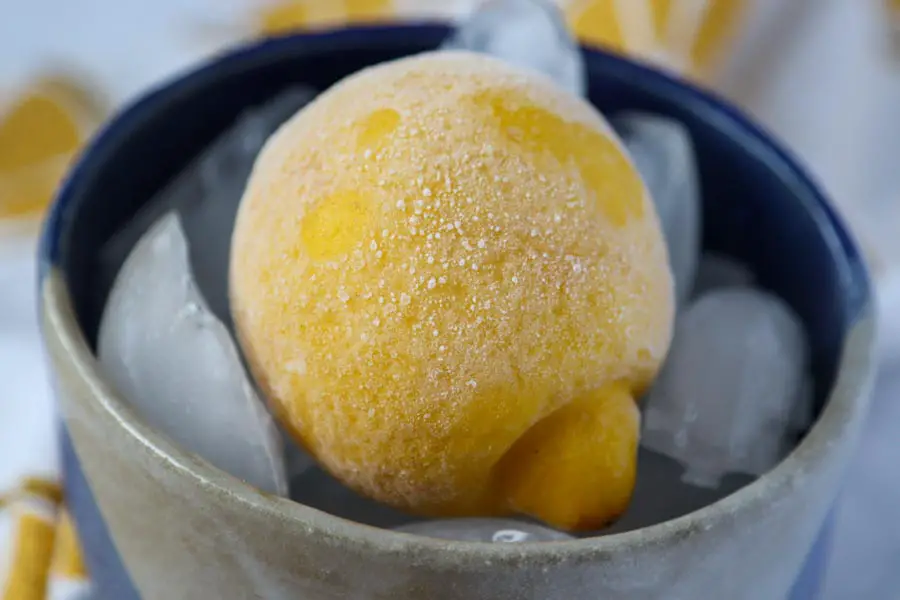
We may receive commissions from purchases made through links in this post, at no additional cost to you.
What can you do with an overabundance of lemons? Come fall and winter – if I’ve done my gardening job right – my lemon trees are full of huge, juicy lemons that I don’t want to waste. Or during other parts of the year, I stumble upon a great sale on citrus at the grocery store so I pick up a bag or two.
Either way, lemons can go bad very quickly if you don’t store them right. They will last longer in the cold of the refrigerator, but my favorite way to store them is – freezing.
Freezing lemons is easy, versatile, and the surest way to preserve fresh flavor for a long time. Lemons store well in the freezer when juiced, zested, sliced, blended with other ingredients, or frozen whole.
When life gives me a pile of lemons (and there’s only so much lemonade you can make…), I take stock of the different ways I use lemons throughout the year. Then I freeze the lemons in various forms so I can easily grab what I need at any time.
Freezing your lemon harvest (or grocery haul) using these 5 methods will ensure that you have fresh-tasting lemons for months. Read on to learn exactly how to do each method, plus ideas about how to use your frozen lemons.
1. How to Freeze Whole Lemons
To freeze lemons whole, first thoroughly wash and dry the fruit. Using a produce brush or heavy-duty kitchen sponge, wash lemons in a bowl of cold water with a couple of tablespoons of vinegar. The vinegar will help remove any wax or other residue.
Dry the lemons with a towel, then let them sit on the counter until they are completely air-dried. Then place the lemons in a plastic freezer bag and remove as much air as possible. Label the bag with the date and lemon variety, if desired, and put it in the freezer.
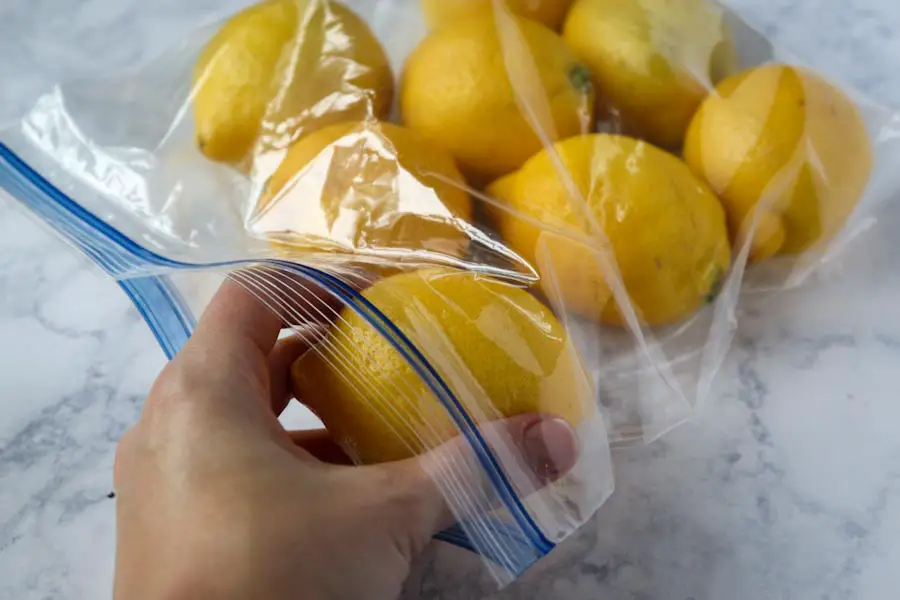
You can also freeze whole lemons that have already been zested. After zesting the yellow peel (continue reading to learn how to freeze the zest), use a paring knife or vegetable peeler to remove the white pith. Then wrap the rindless lemons in plastic wrap, parchment, or wax paper, and freeze them in an airtight bag.
Frozen whole lemons will stay good for at least 3-6 months. To help them last as long as possible, keep them airtight. Lemons can lose moisture if exposed to air, even in the freezer.
Defrosting:
To defrost whole lemons, let them sit on the counter for about an hour until they are soft enough to use. (Put the lemons in a bowl to avoid a mess as the ice melts.) Or, place them in a bowl of cool water to defrost even quicker.
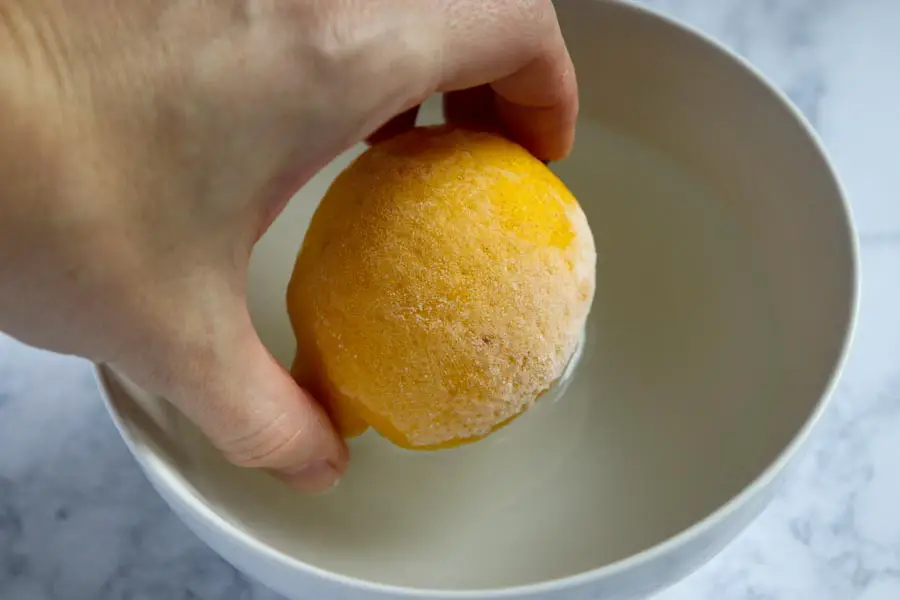
You can thaw frozen lemons in the microwave, too – use the defrost setting (or 30% power) in 30-second intervals.
Using Frozen Whole Lemons:
It’s easy to zest a frozen lemon – perhaps even easier than when they are fresh – using a microplane or zester. You can even grate a whole frozen lemon – rind and all – to use in cooked recipes, drinks, or baking. Slice a frozen lemon into rings and place them on top of fish before baking in the oven.
The freezing process breaks down the cell walls of the rind and flesh, softening the lemon and making it even more juicy. Defrosted frozen lemons are great to use for juicing or recipes where the lemon doesn’t need to stay intact. You can even put the frozen lemon in a smoothie, or puree it with some simple syrup for a quick lemon sorbet.
Watch the video below to see exactly how I freeze, store, and preserve my Meyer lemon harvest:
2. How to Freeze Lemon Zest
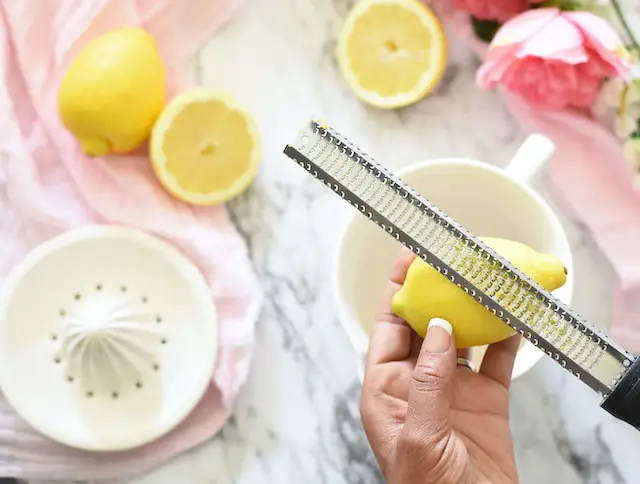
I typically find it easiest to dehydrate lemon zest in the oven for long-term storage, but freezing is another great option. You can freeze microplane-grated zest or larger strips from a vegetable peeler.
To freeze lemon zest, first wash and dry the lemons. Use a microplane, zester, or vegetable peeler to remove only the yellow portion of the rind, avoiding the bitter white pith.
For larger peels, store in a freezer-safe bag with as much air as possible removed. If you used a microplane or zester, spread the zest onto a plate or small baking sheet and place in the freezer. Once the zest is frozen, store it in a bag in the freezer. Freezing the zest on a tray keeps it from clumping together and makes it easier to pull out only what you need.
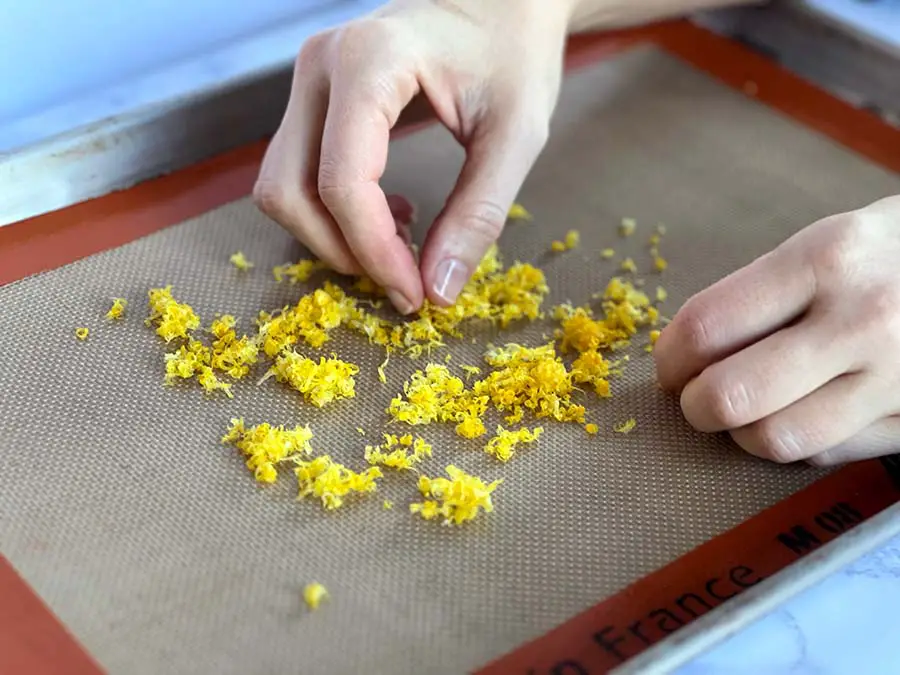
You can also freeze zest in ice cube trays either by itself, or with a little bit of lemon juice. For easy portions, measure out about a teaspoon of zest per section. Then top with fresh lemon juice, freeze, and store in a freezer bag.
Frozen lemon zest will stay good for at least 6 months. Be sure to store the zest in an airtight bag or container. The natural oils in the lemon peel will absorb other smells and flavors over time if left exposed in the freezer.
Defrosting:
There’s no need to defrost frozen lemon zest. Use just as you would fresh zest.
Using Frozen Lemon Zest:
You can throw frozen lemon zest in just about any recipe – baked goods, soups, savory dishes, sauces, the list goes on. I keep it in pre-measured portions (usually a teaspoon) so I know how much to use.
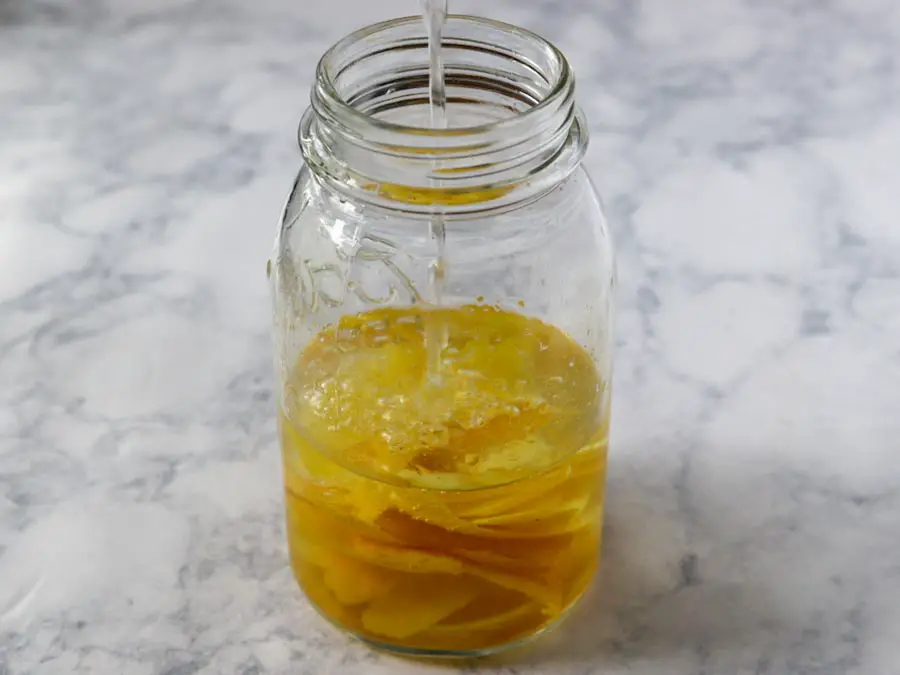
Try using larger frozen lemon peels to make an easy lemon-infused vodka. Place the zest from 3-4 lemons in a large jar and fill with vodka. Let it sit for about two weeks, occasionally swirling the jar. Then strain away the peels and bottle the vodka. Use it in all kinds of cocktails!
3. Freezing Lemon Juice
When freezing lemon juice, I like to use lemons that I have already zested. It’s easy to zest a whole lemon – not so easy if the lemon is cut up or juiced.
Roll the lemon back and forth on the counter to release the juice. Cut it in half and juice using your preferred equipment. If I’m doing just a few lemons, I’ll use a citrus reamer or hand juicer. If I have a pile of lemons to juice, I’ll use the citrus juicing attachment for my Kitchen Aid mixer.
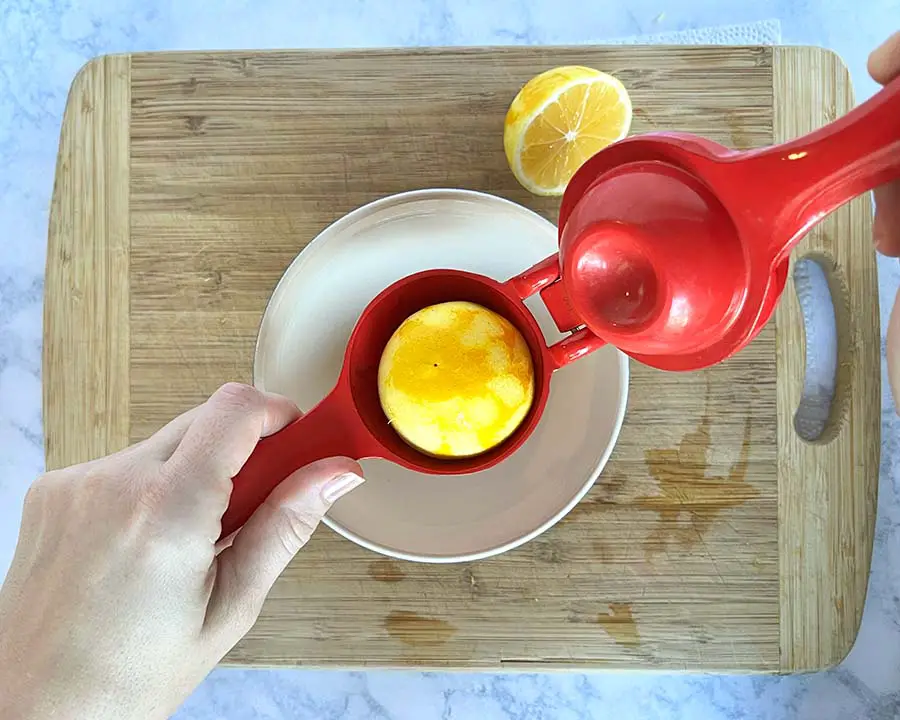
I like to store the juice a couple of ways. I always freeze some in ice cube trays – put about a tablespoon in each cube for easy measuring. You can also freeze larger amounts in jars or bags. If you use jars, be sure to leave plenty of head space to keep the jar from breaking. I typically freeze the juice with the lid off, then add the lid once it’s frozen.
Defrosting:
The simplest way to defrost frozen lemon juice is in the microwave. Use 50% power and defrost in 30-second intervals until the juice is thawed.
You can also defrost slowly by placing the jar or bag of juice in the refrigerator overnight. The juice should be defrosted and ready to use by morning.
Using Frozen Lemon Juice:
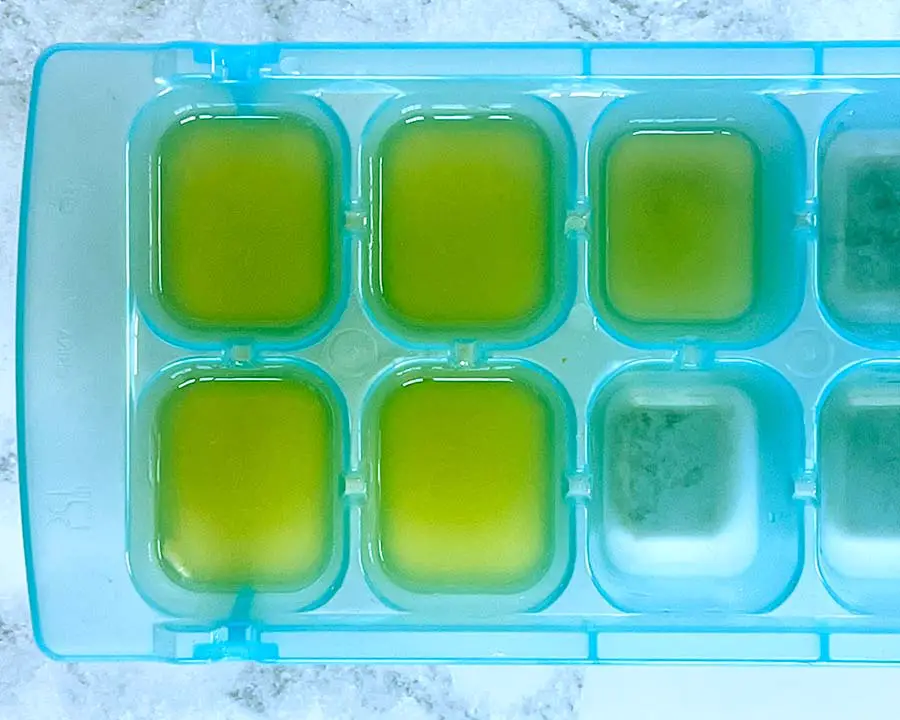
Use thawed frozen lemon juice exactly as you use fresh juice. You can throw frozen cubes right into a pot of soup or sauce, or blend into a smoothie.
I freeze lemon juice in 1- or 2-cup portions to use for lemonade in the summer. Fresh juice always makes homemade lemonade taste infinitely better than store-bought.
4. Freezing Lemon Slices or Wedges
After washing the lemons, slice them into whole slices, half slices, or wedges. Lay the lemon pieces on a parchment- or Silpat-lined baking tray in a single layer. Put the tray in the freezer until the lemons are completely frozen.
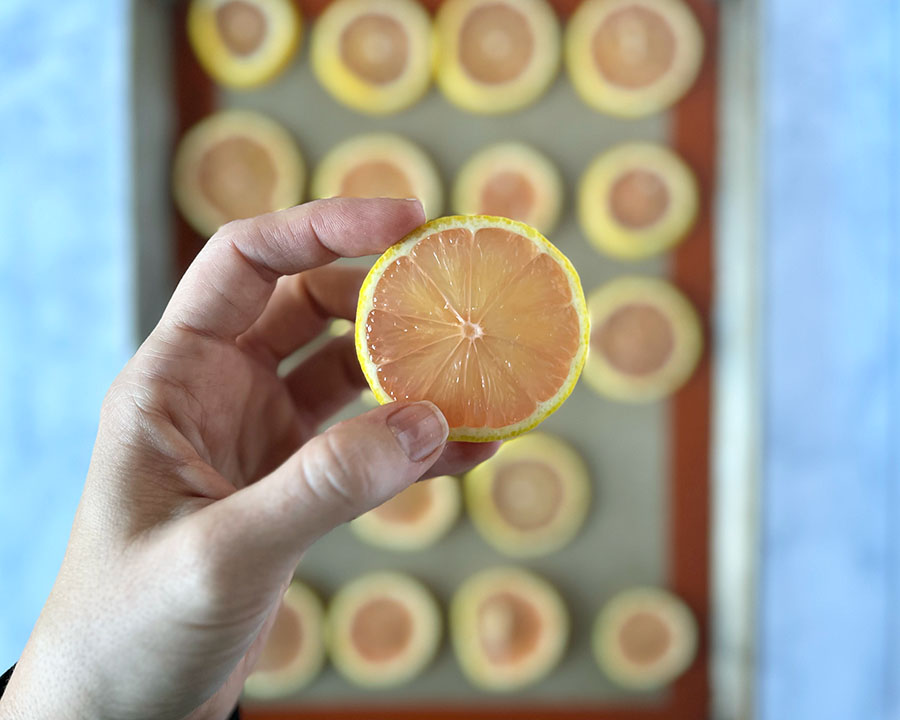
Then, transfer the slices or wedges to a labeled freezer bag, and remove the excess air. Store them in the freezer for 3-6 months.
Defrosting:
Don’t worry about thawing the lemon pieces. Since they are already sliced or cut into wedges, they will thaw out quickly no matter how you use them.
Using Frozen Lemon Slices:
I grab a few lemon slices from the freezer to add to hot or iced tea, lemonade, or as a garnish in cocktails. In the winter, one of my favorite things to do is simply float a couple ‘Pink Variegated’ lemon slices in some hot water. I’ll sip this simple tea to keep warm as I’m working. These lemons are so pretty, and they’re less acidic than the typical store-bought lemon.

5. Freezing Lemon Puree (with Ginger and Honey)
This is something I do because I love to drink lemon-honey-ginger tea when I’m feeling under the weather, or when my throat needs a little soothing (hello, allergy season). It’s part of my lemon-freezing regimen, and I’m always glad to have a container of these cubes in my freezer.
To freeze pureed lemon, honey, and ginger cubes, wash and dry the lemons and ginger. Zest the yellow part of the lemon rinds using a microplane or vegetable peeler. Then remove and discard the bitter white pith.
I don’t bother to peel the ginger, as long as it’s scrubbed clean. Roughly chop the ginger, then place it into a food processor with the lemon zest, peeled lemon flesh, and honey.
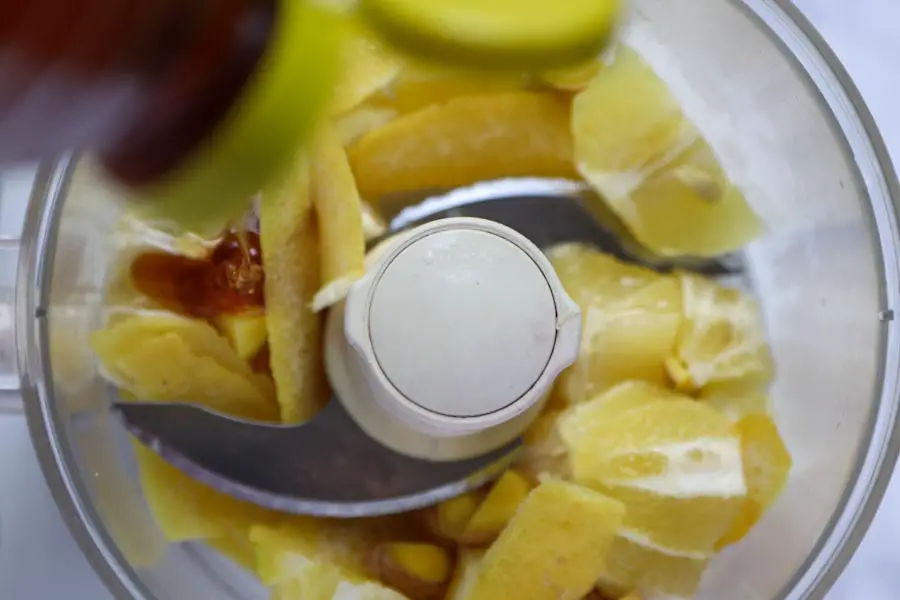
I use about an inch of ginger and two tablespoons of honey for each lemon, but you can adjust the ratios to your taste. Pulse the mixture until it’s smooth.
Drop the puree into ice cube trays and freeze until solid. Pop them in a freezer bag to store for 3-6 months (if they last that long).
Defrosting:
If you need to defrost your lemon-honey-ginger cubes, the microwave is the best option. Use the defrost setting (30% power) in 30-second intervals.
Using Frozen Pureed Lemon:
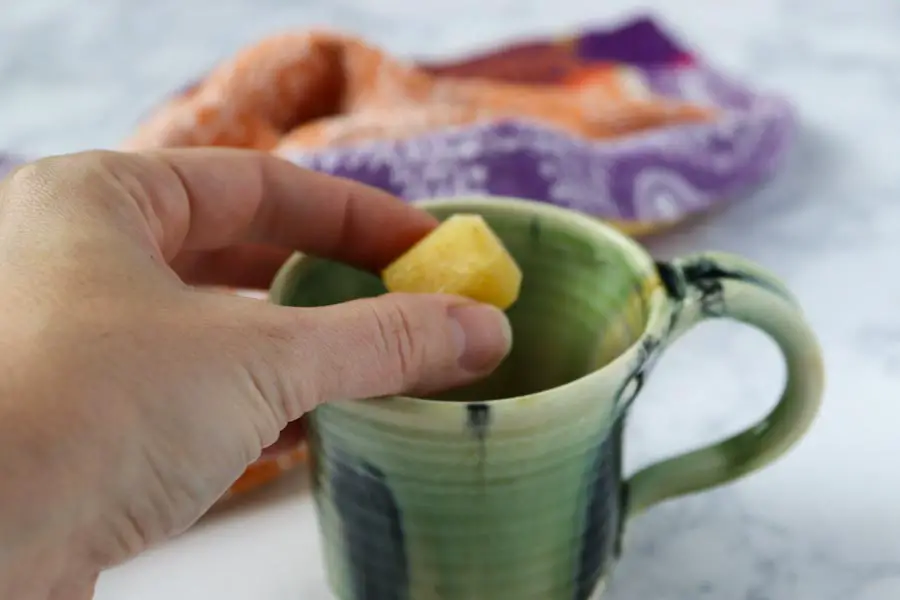
I primarily use these to make tea. Place a few cubes in the bottom of a mug and pour in boiling water. Once the cubes thaw, stir and sip!
If you’d rather have a pulp-free tea, simply mix lemon juice with honey (1-2 tablespoons of honey per lemon). Cut the ginger into thin slices, then freeze the lemon-honey mixture in ice cube trays with a few slices of ginger for each cube.
You can also use these puree cubes to flavor other desserts or dishes. Lemon, ginger, and honey are versatile flavors that can work in sweet or savory recipes.

